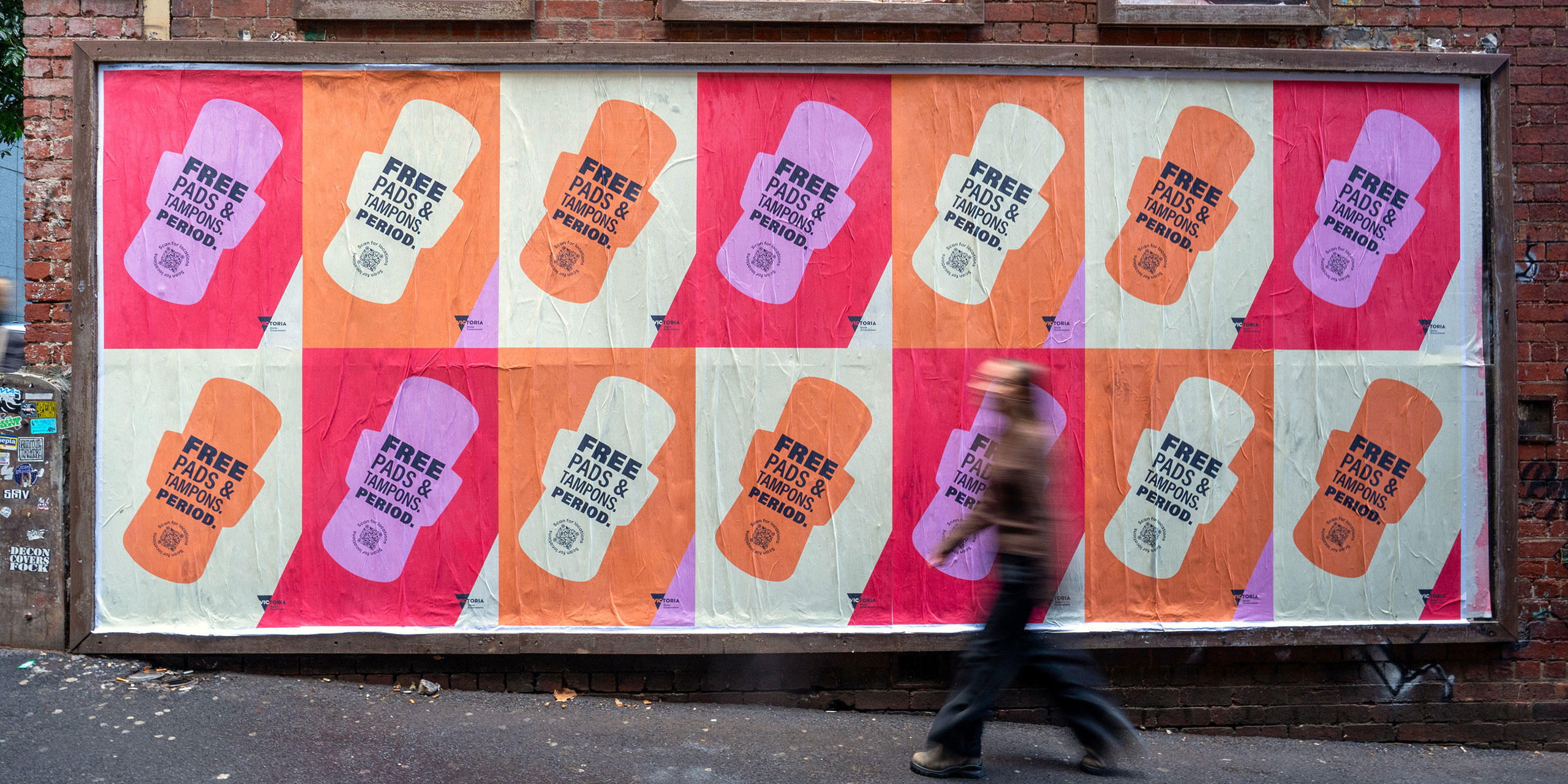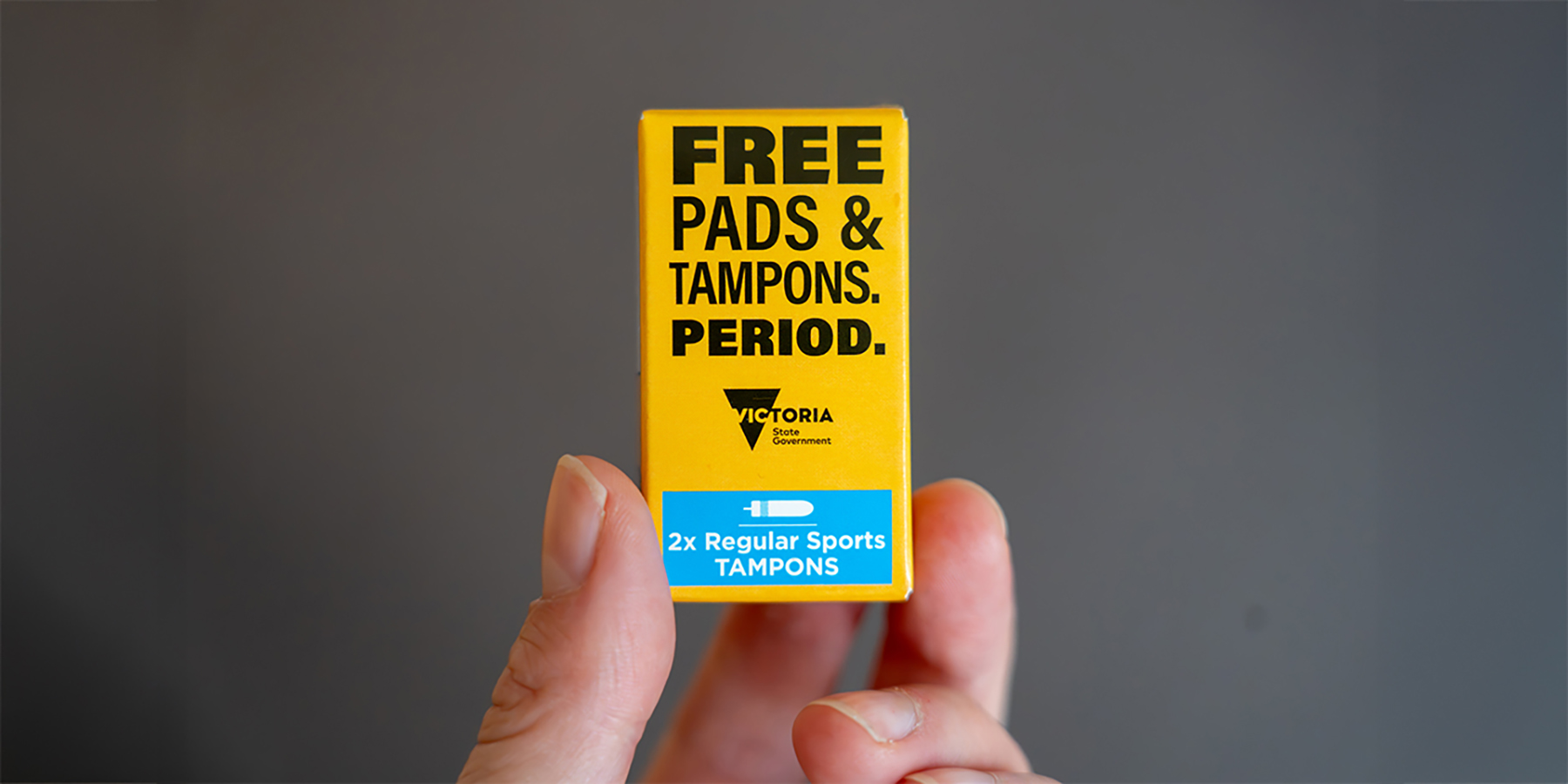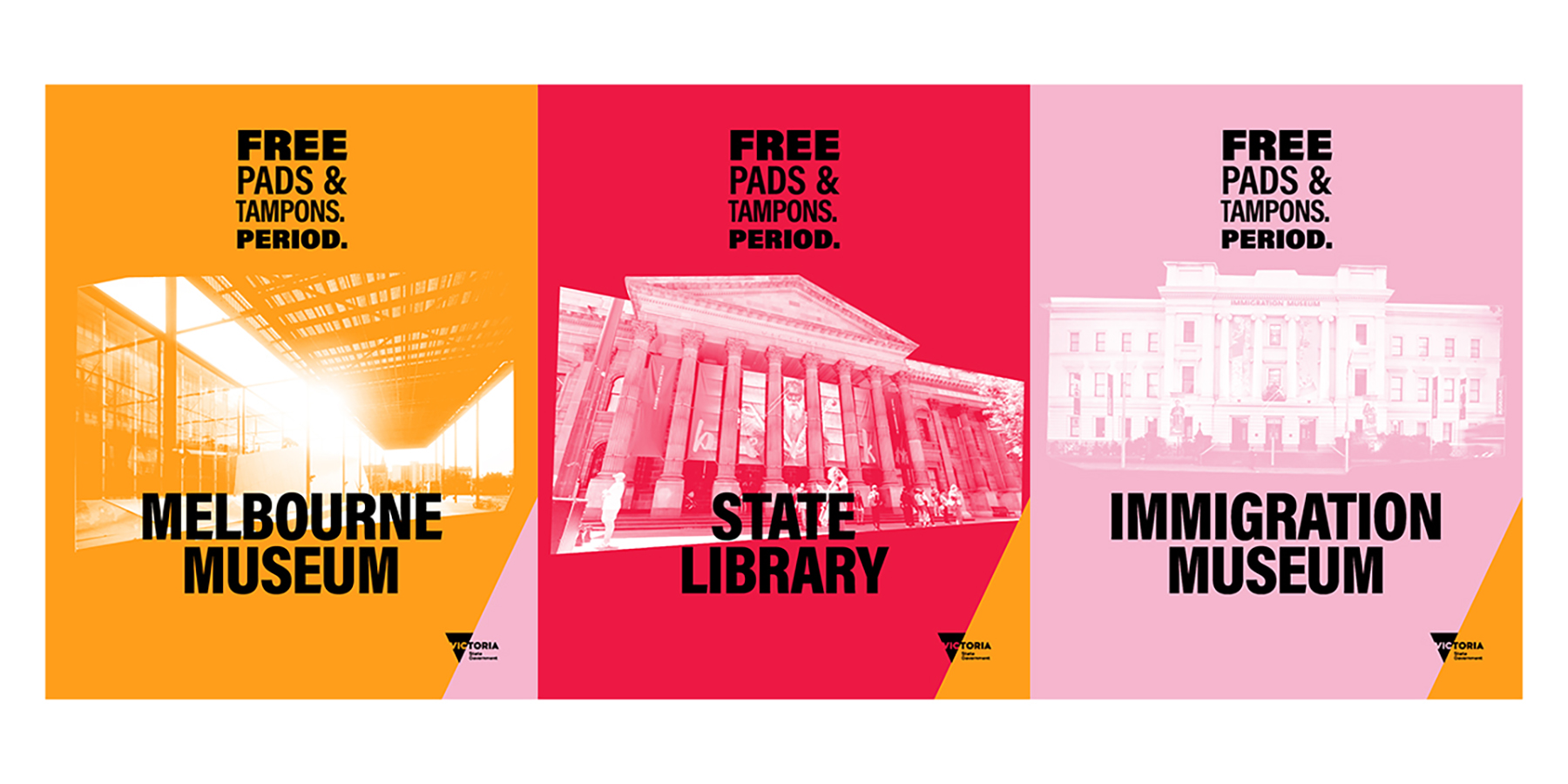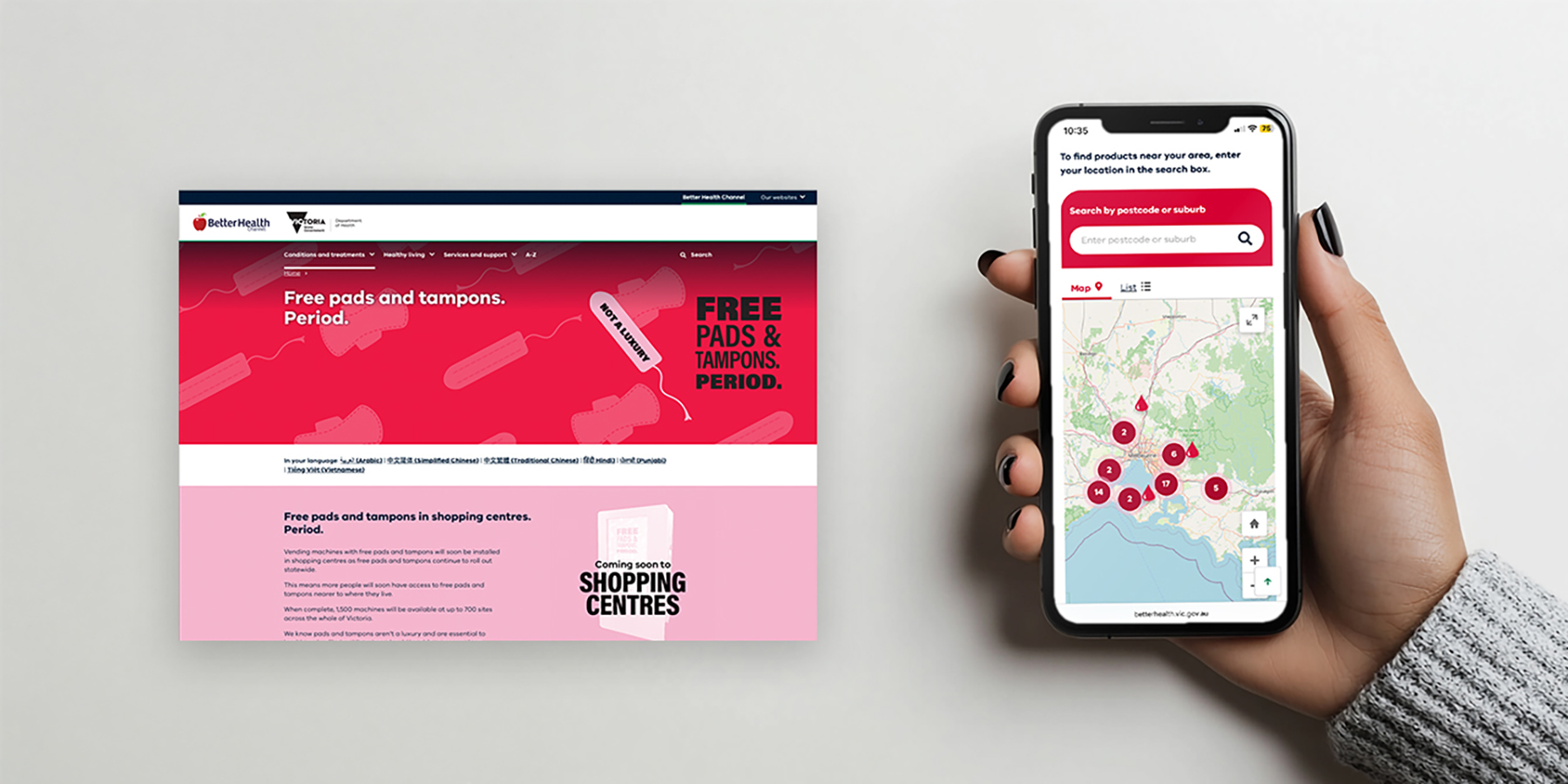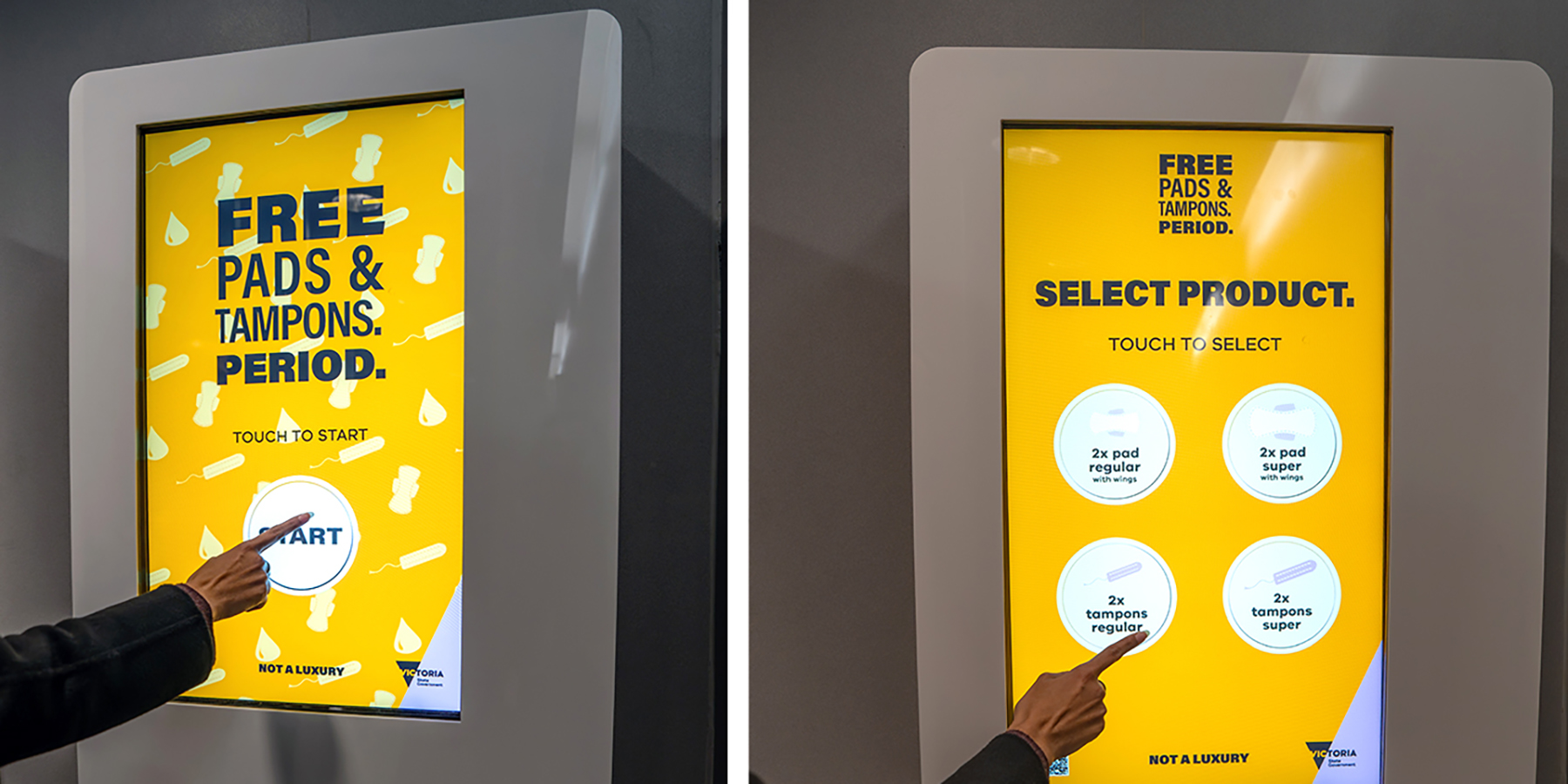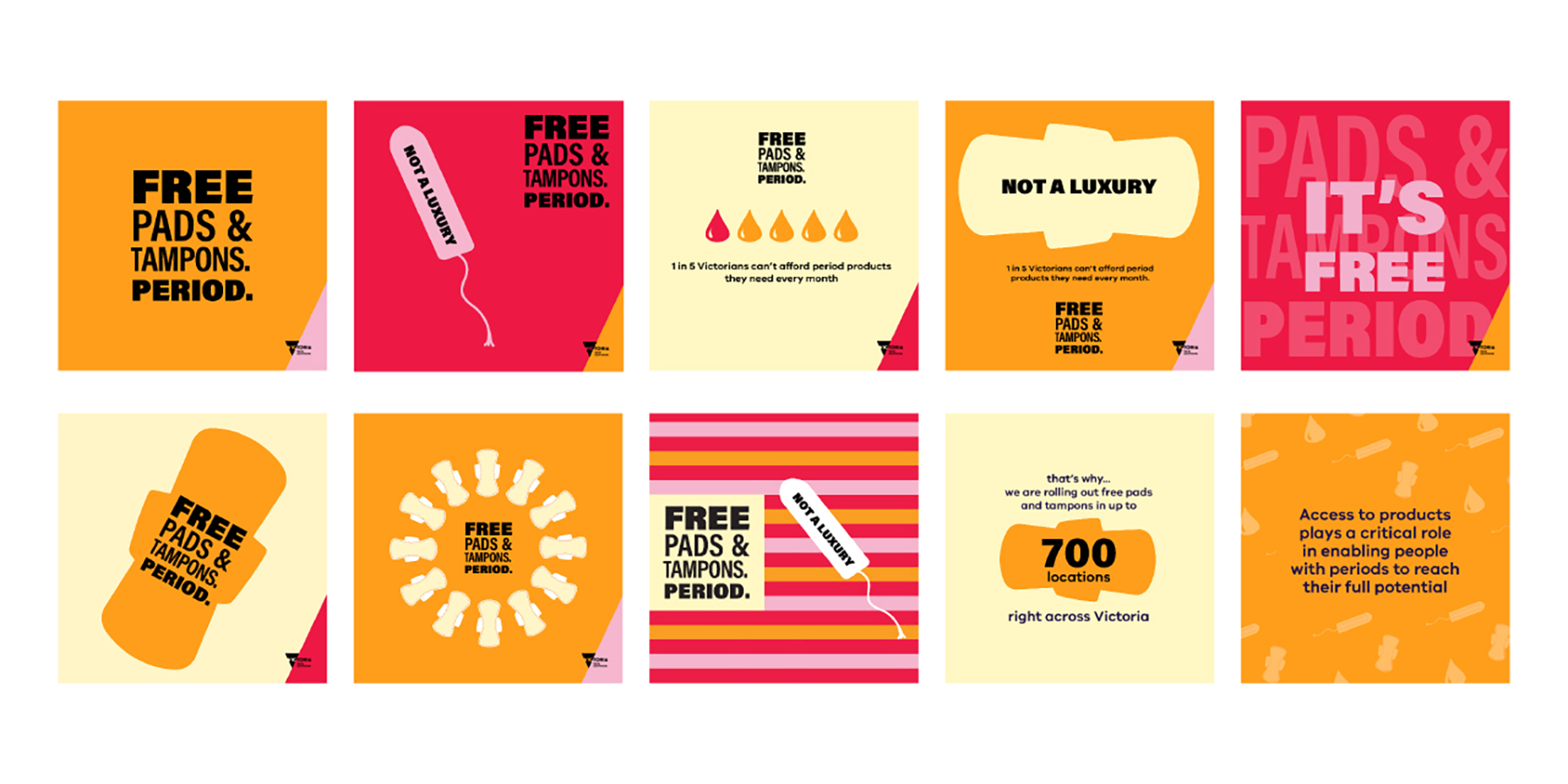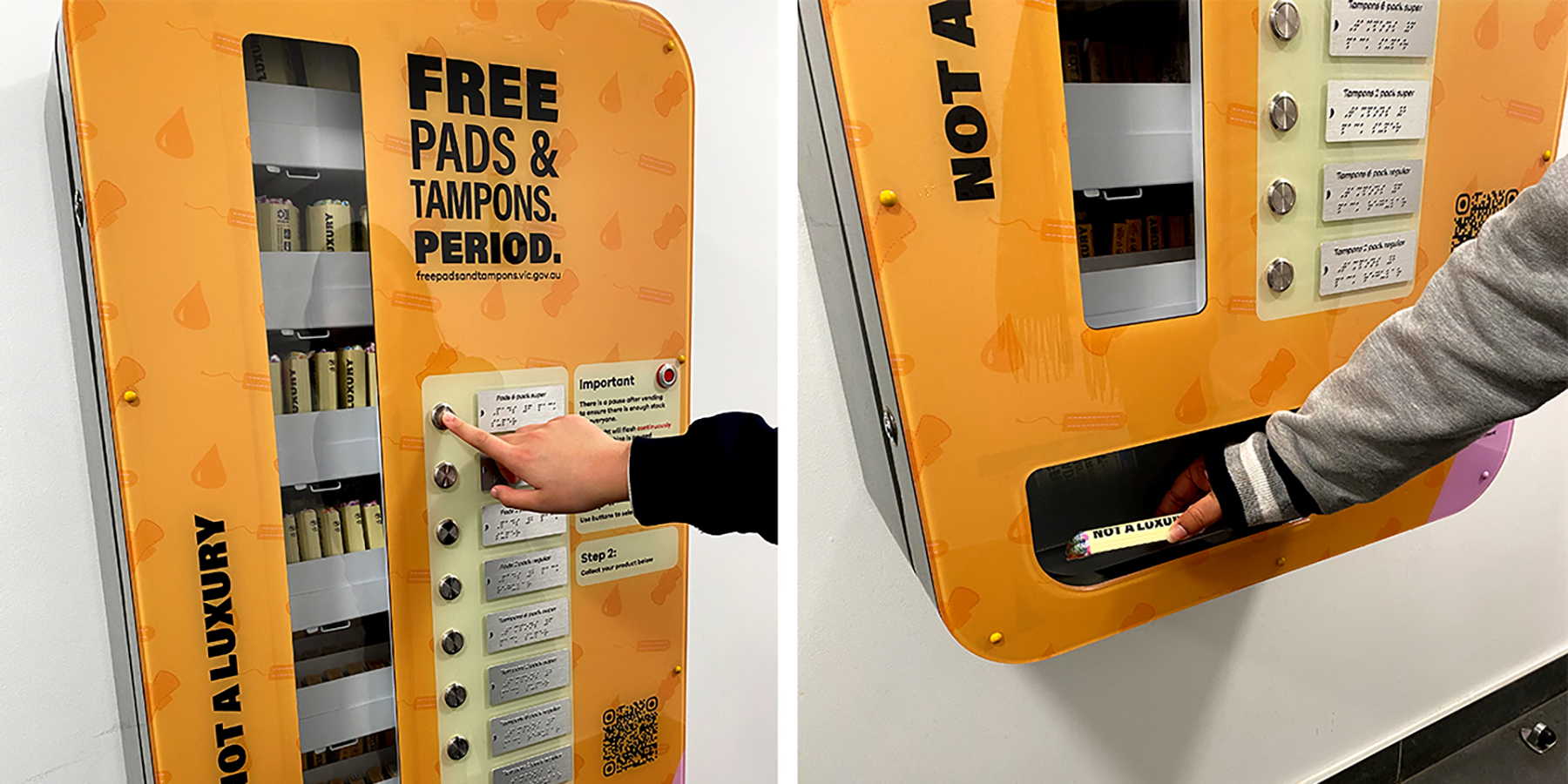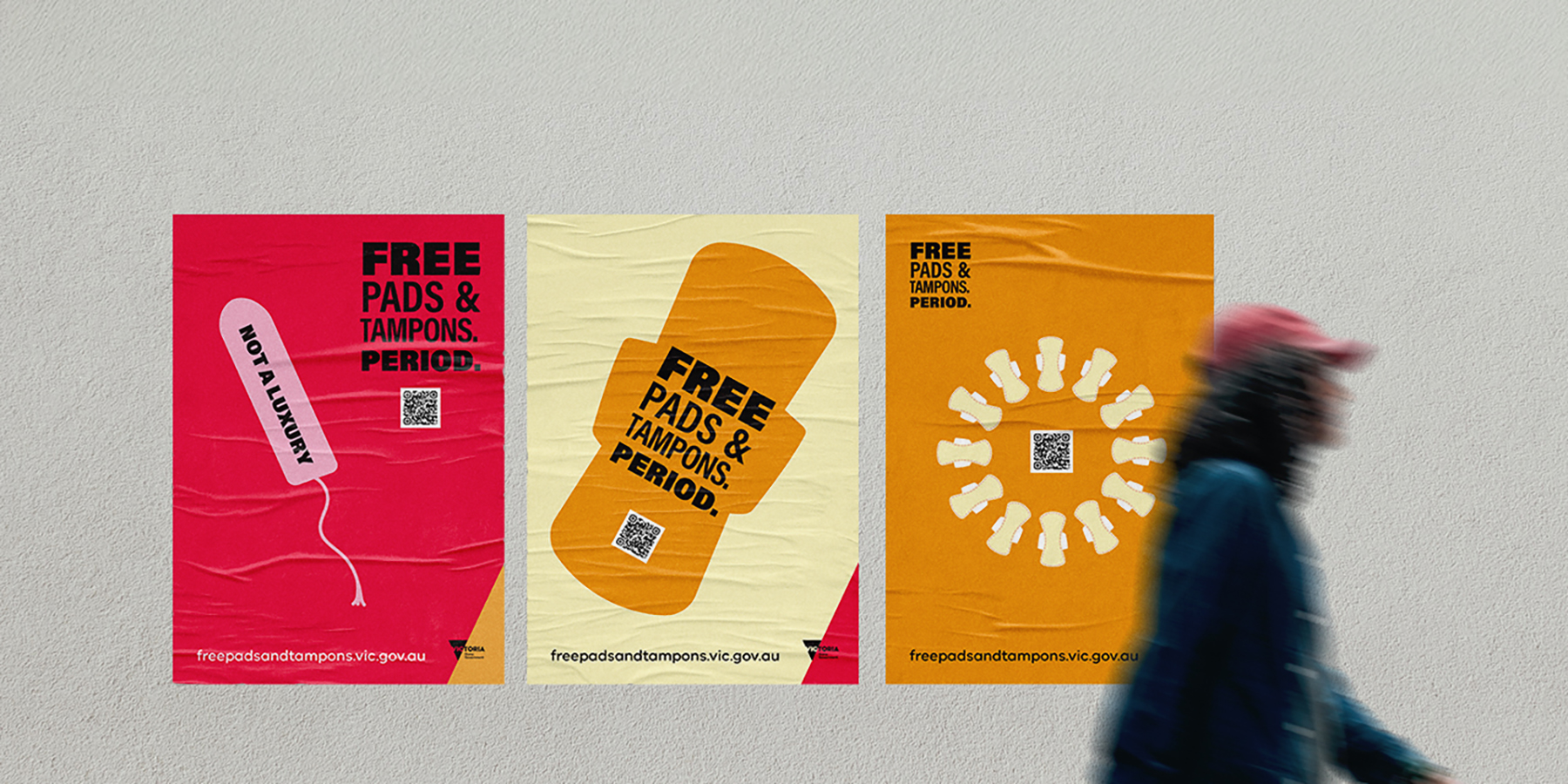Our design process took several months, from the research phase to working with international product suppliers and vending machine companies. We reviewed similar campaigns from around the world. We involved stakeholders and community members, incorporating their feedback to ensure we agreed on the best direction.
Concept development was next. To meet the brief, the designs were bold, using bright high-contrast colours and large fonts to make the message pop. We built our campaign around the tagline ‘Free Pads and Tampons. Period.’ This wordmark needed to be scalable, and we designed mock-ups on miniature tampon boxes and billboards. Then, we showed stakeholders, who provided constructive feedback, such as ensuring our colour palette was rooted in real colours of menstruation – reds, pinks, and oranges. We didn’t want to shy away from this and felt it was a strong message to convey.
Once the concept was approved, we rolled it out across a wide range of materials: vending machines, packaging, posters, social media, website banners, and more. We worked with suppliers to send packaging designs overseas, where 100,000 units were printed. We also created touchscreen vending machine animations and a different accessibility machine that has braille instead of a touchscreen, with at least one accessible machine per site.
The campaign was launched in phases: first, a test phase of 50 machines was launched at the State Library with the Minister for Women. This allowed for user testing of the vending machines and further tweaks, followed by a broader public rollout at sites across Victoria.
When the campaign went public, we developed street posters that plastered pads and tampons across Victorian walls, hitting another campaign objective of normalising periods. These posters used striking repetition and were designed to be rolled out in grids. We also produced animated reels for social media to improve awareness and engagement.

